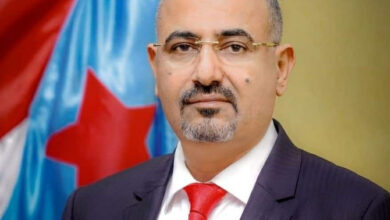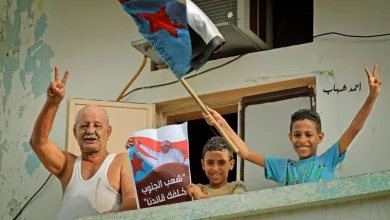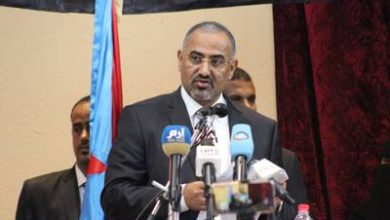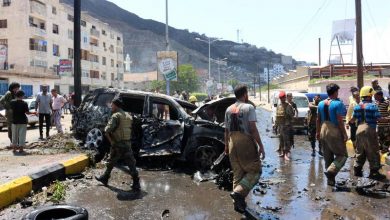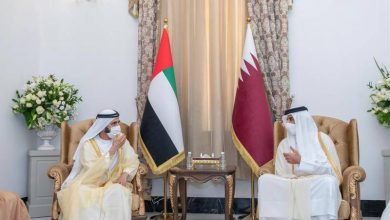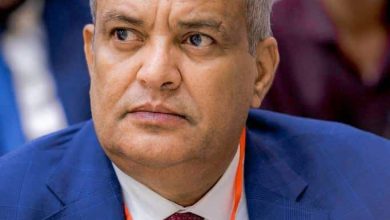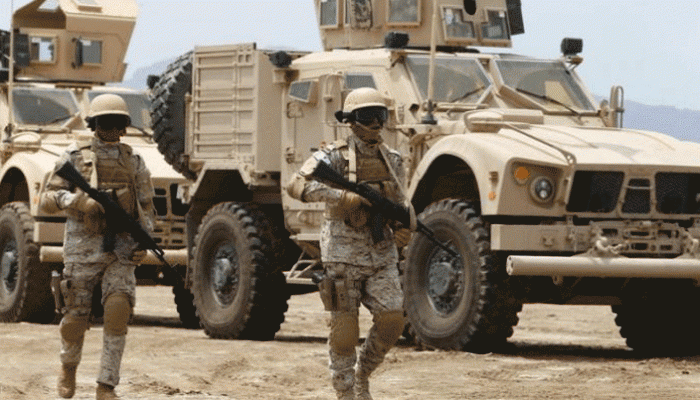
Hadramout21:washingtonpost:NEHM, Yemen
Above lazy booms of artillery shelling and howling mountain winds, a Yemeni army commander described the endgame of his country’s destructive, three-year civil war in a way that suggested a bloodier phase was yet to come.
The capital, Sanaa, sat 60 or so miles away, controlled by Yemen’s rebels. The commander, Gen. Nasser al-Thebani, predicted an imminent advance on the city, while eyeing a loftier goal.
“The strategy is the liberation of Yemen,” he said.
But neither Thebani’s government troops, which are backed by a Saudi Arabia-led military coalition, nor their opponents, the rebel group known as the Houthis, have shown they have the military strength to prevail. And as the battle grinds on, the United States has chosen to maintain its military support for the Saudi coalition — despite a rising tide of opposition to the war by U.S. lawmakers and increasingly dire warnings about its toll on civilians.
The U.S. refuels coalition warplanes, shares intelligence with the Saudis and provides them with munitions used in the air war. The Trump administration has weighed in with diplomatic assistance, too, bolstering the Saudi case for the war by publicly detailing what American officials allege is Iran’s growing military role on the side of the Houthis.

General Nasser al-Thebani, a Yemeni government commander, speaks to his troops while leading the battle against Shiite-Houthi rebels outside Sanaa, Yemen, on Jan. 31. (Glen Carey/Bloomberg News)
American officials say their involvement has tempered a military campaign that the Saudis felt compelled to conduct, with or without U.S. assistance, and has given them added leverage to press the Saudis to move toward negotiations.
But the continuing U.S. support — fueled by a consensus among American and Saudi officials that Yemen is part of a broader regional struggle against Iran’s influence — may have also reduced pressure on the Saudi government to quickly take steps that would de-escalate the conflict, analysts said.
“The Saudis feel they have time,” said Rafat Al-Akhali, a former Yemeni official who now runs a research project on state fragility at the University of Oxford. The Saudi leadership seemed convinced, he added, that the war was its only shot at reducing a military threat from the Houthis, which has included their firing of ballistic missiles into Saudi territory.
When it came to the Saudi’s international allies, including the United States and Britain, “clearly there isn’t enough pressure to stop the war,” he said.
As Saudi crown prince Mohammed bin Salman, the architect of his country’s intervention in Yemen, prepared to visit the White House, a group of aid agencies operating in the country called on President Trump to use the United States’ “unique ability to influence Saudi actions” to press for an end to a conflict that has killed more than 5,000 civilians and threatened Yemenis with starvation, a cholera epidemic and a deadly outbreak of diphtheria.

President Trump meets March 14, 2017, at the White House with Mohammed bin Salman, who was deputy crown prince and Saudi defense minister at the time. (Jabin Botsford/The Washington Post)
“Yemen is decimated,” they wrote in a letter March 14. “The suffering of Yemen’s people will end only when the war ends.”
U.S. lawmakers from both parties have taken unusual steps to voice their concerns about Saudi actions, and a bipartisan measure headed for a possible vote this week would force the United States to withdraw support for the war.
In a letter to senior lawmakers last week, Defense Secretary Jim Mattis said that ending U.S. military involvement might reduce U.S. leverage with Saudi Arabia, endanger counterterrorism activities and actually increase civilian casualties — “all of which would further exacerbate the situation and humanitarian crisis,” he wrote.
In the spring of 2015, as U.S. diplomats were racing to conclude President Barack Obama’s nuclear deal with Iran, the White House was also grappling with mounting anger from their closest Gulf allies. The region’s Sunni monarchies, led by Saudi Arabia, feared the deal would upend the Middle East’s power balance in favor of Shiite Iran.
While American officials were alarmed by the Houthi advance, they had little desire to wade into a distant civil war. When U.S. officials learned of Saudi plans to conduct air attacks in Yemen — with what one official said was only 24 hours notice — they initially tried to discourage them. But seeing an opportunity to prove that Washington hadn’t abandoned a key ally, they quickly pivoted to a position of support.
The U.S. military established a cell with Saudi Arabia to share real-time intelligence for the air campaign and sought to help the kingdom harden its defenses against Houthi attacks.
But officials grew more uncomfortable as reports of civilian deaths piled up, largely as a result of coalition airstrikes, and as human rights groups accused the United States of complicity. The tensions came to a head in the fall of 2016, when a Saudi strike killed more than 100 people at a funeral. Furious, the White House curtailed intelligence-sharing and withheld the sale of precision munitions coveted by the Saudis.

The destruction following an airstrike Oct. 8, 2016, on a funeral hall by Saudi-led coalition airplanes on a building in Yemen’s capital Sanaa. (Mohammed Huwais/AFP/Getty Images)
“In retrospect, the problem is that we did just enough to produce the perception of complicity, without doing enough to actually influence their behavior,” a former senior Obama administration official said. “We tried to take this principled middle position, which left us stuck.”
With Trump’s arrival in Washington in early 2017, frayed U.S.-Saudi ties looked set for a reboot.
Trump, an opponent of the nuclear deal with Iran, had expressed a desire to restore ties with Gulf partners. He also shared the Saudi view of Iran and promised to do more than Obama had to check Tehran’s influence throughout the region.
As a sign of renewed U.S. support, the White House lifted the restriction on precision munition sales. It has also elevated its threats against Iran, showcasing advanced Iranian munitions intelligence agencies say were smuggled into Yemen to threaten Gulf powers. Iran has denied supplying the Houthis with weapons.
“We see the war in Yemen as pushing back against Iran’s attempt to destabilize the entire region and beyond,” said a senior administration official, who spoke on the condition of anonymity to discuss internal strategy. “So we think it’s important that the space not be yielded to them.”
Continued support, the official said, would ease Saudi concerns that the United States might abandon its regional allies: “It’s making a statement that the friendship is real.”
That display of friendship has made the United States a party to an increasingly complex and deadly battle: a conflict that Saudi officials, to illustrate their resolve, frequently compare to the American military intervention in Afghanistan.
But American officials do not believe the war can be decisively won. Coalition members, including the Saudis and the United Arab Emirates, have backed separate and sometimes feuding forces, reducing their effectiveness. On the other side, a Houthi alliance fractured after the rebels killed former Yemeni president Ali Abdullah Saleh, their erstwhile partner. Battlefield advances have slowed, or stalled.
At the front line in Nehm, Gen. Thebani told visiting journalists last week that the assault on Sanaa would begin “sooner than you think.” But soldiers standing nearby said they had been stuck there for more than a year.
In the meantime, the cost to civilians has mounted. In their letter to Trump, the aid agencies detailed a grim toll: More than 5,000 children had been killed or injured since the beginning of the Saudi-led intervention three years ago. About 8.4 million Yemenis, or roughly a third of the population, were on the verge of starvation.
The Saudi government recently announced expanded relief measures including an “air bridge” for aid shipments, safety measures for humanitarian workers as well as financial aid. A Saudi-sponsored trip for journalists to the Yemeni city of Marib last week was intended to highlight other efforts, including assistance to the war-wounded, children and internally displaced people.
Aid groups have praised the measures but say they amount to little if the coalition does not ease obstacles facing commercial shippers and lift a de facto blockade of Yemen. In that effort, the Trump administration could play a central role, said Amanda Catanzano, the director for policy and advocacy at the International Rescue Committee, which operates in Yemen.

Saudi soldiers stand guard March 12 before aid supplies are unloaded from a Saudi air force cargo plane at an airfield in Yemen’s central province of Marib. (Abdullah Al-Qadry/AFP/Getty Images)
“They need to be pushing the Saudis to permanently open the ports at Hodeidah and Saleef, pushing for streamlined inspections, pushing on the opening of Sanaa airport. The crisis isn’t going to end in the absence of a political solution,” she added. “The U.S. has a big role to play in getting these parties to the table.”
Frustration within the Trump administration reached a fever pitch in December when Trump, after being briefed on the humanitarian situation in his morning intelligence briefing, lashed out at Saudi Arabia, calling on the kingdom to make sure Yemenis receive food and other supplies “immediately.”
As part of a military assistance program, which U.S. officials stress is “limited and defensive” in nature, a handful of U.S. military personnel sit in a room adjacent to where targeting takes place at the coalition’s command center in Riyadh.

